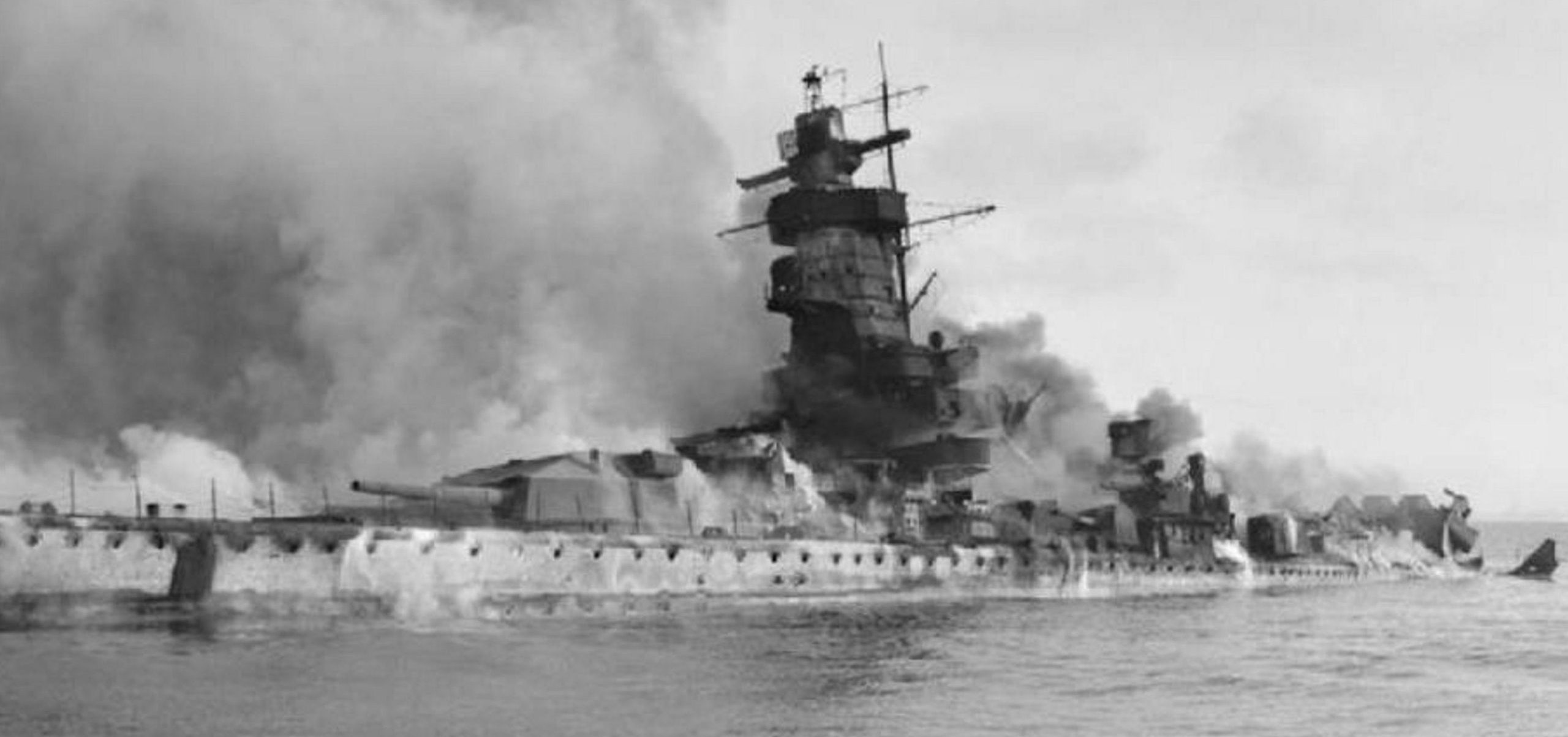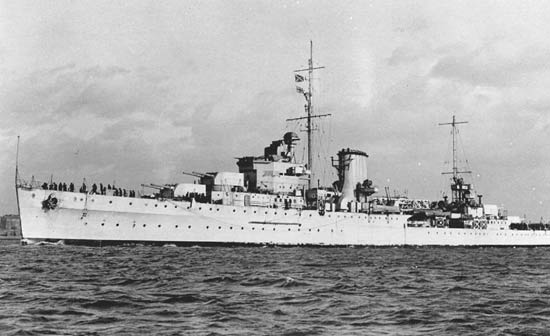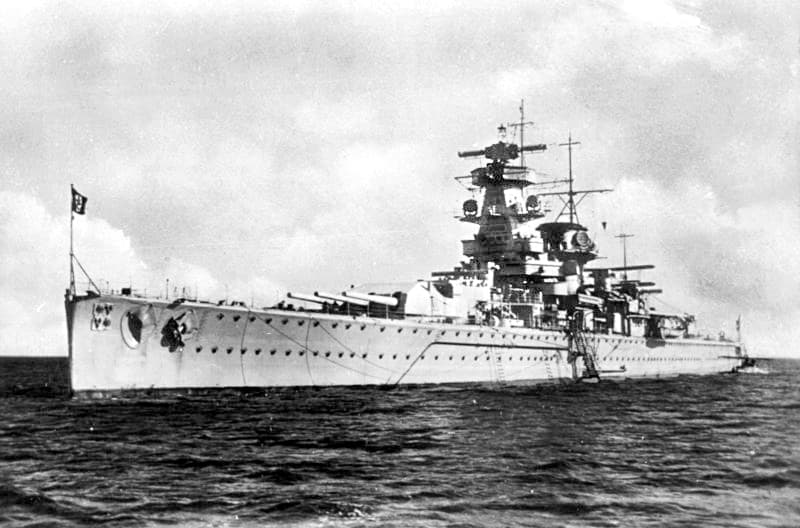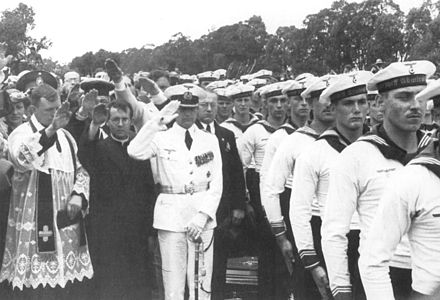WWII battle (from which Ajax takes its name) marks 82nd anniversary
Published December 13, 2021 at 1:42 pm

The Battle of River Plate, the first naval battle of the Second World War, was fought between the German Kriegsmarine Admiral Graf Spee, and three vessels of the Royal Navy, including HMS Ajax, 82 years ago today off the coast of Uruguay on December 13, 1939.
Ajax, previously an unnamed settlement, would be named after the vessel in 1941 less than two years after the battle.
When Second World War broke out in September 1939 the Admiral Graf Spee was already at sea. In the early days of the war the vessel toured the South Atlantic and Indian Oceans sinking nine allied Merchant ships.
However, none of the crews of those ship suffered a single loss of life. Captain Hans Langsdorff had a policy of evacuating crew members before sinking the ship, winning respect from the crewmen of the ships he sank through humane treatment.
These merchant ships were the logistical backbone of the war effort at this stage of the war, funnelling munitions and rations to battlefields across the planet. The Royal Navy needed the Admiral Graf Spee out of commision to protect these merchant vessels.
The Royal Navy assembled a flotilla of nine vessel to scour the oceans for the ship. HMS Cumberland, HMS Exeter, HMS Achilles, and HMS Ajax made up Force G under the command of Commodore Henry Harwood.

HMS Ajax, for which the town is named.
After hearing reports of another sinking, Harwood predicted the Admiral Graf Spee would next strike in the River Plate, where the Uruguay River and Parana River meet and flow into the Atlantic, according to his report.
The Rio de la Plata, as it’s called in Spanish, forms part of the border between Uruguay and Argentina and serves, to this day, as one of the most vital ports in the region with access to capitals Montevideo and Buenos Aires.
Harwood decided River Plate was the most advantageous place to look because a raiding ship could do incredible damage to many merchant vessels in such a congested area.
Force G was a convoy of mostly light cruisers, and therefore heavily outgunned by the Admiral Graf Spee, a heavy cruiser. As result, Harwood decided the best strategy would be to split the convoy into two units and flank the Admiral, forcing the larger ship to split its fire between two targets.

Admiral Henry Harwood commanded Force G during the Battle of River plate as a Commodore. He was promoted and knighted after the battle.
Shortly after 5 a.m. December 13, 1939 Harwood received reports of an enemy vessel in the area, and sent HMS Exeter to investigate. Lansdorff’s lookout spotted the Exeter, but Langsdorff underestimated the size of Force G.
He ordered the Admiral Graf Spee to engage what he thought was a small unit out to protect the merchant vessels before realizing his mistake.
The convoy followed the plan with the Achilles and Ajax taking one flank, and the Exter the other. The Admiral Graf Spee opened fire on the Exeter, straddling the vessel with its third volley. Shrapnel ripped through the Exeter’s hull killing the torpedo crew and damaging communications lines.
The Admiral Graf Spee did split its fire as Harwood intended but was still able to do severe damage to the Exeter. Filling with water and tilting seven degrees, and with only one operational gun, the Exeter still managed to launch the coup de grace.
The Exeter fired a shell through two decks of the Admiral Graf Spee. When the shell exploded, it destroyed the German vessel’s raw fuel system which cleaned and created fuel, This left them with only 16 hours of fuel, not enough to return to Germany, effectively dooming the vessel.
The Exeter was forced to break off around 7:30 a.m. when her final turret was put out of commision. The Achilles and Ajax, also having sustained and dealt damage, repositioned to take over from the Exeter. This provided the Admiral Graf Spee time to leave a smoke screen and flee.
The battle became a chase as the Admiral Graf Spee raced to the neutral Montevideo port for the rest of the day. Twice HMS Ajax followed the German cruiser too closely overestimating its speed causing minor exchanges of turret fire.
By nightfall, the Admiral Graf Spee was outlined by the lights of Montevideo. By midnight they were docked. This move was a major mistake by Langsdorff. While officially neutral, Uruguay benefited significantly from Britain in its early days and heavily favored the Allies. Nazi Germany feared Uruguay would official choose to join the Allies.
Normally under the Hague Convention ships could only spend 24 hours in a neutral port. Uruguayan authorities granted an addition 72 hour stay, after Langsdorff asked for two weeks. British forces who had completed their sweeps around Africa were ordered to Uruguay, but would take days to cross the Atlantic.

The Admiral Graf Spee
The British broadcasted disinformation about their true strength in the area, ordering the Ajax, Achilles (replenished of fuel and munitions but not repaired) and Cumberland to create smoke as they waited outside the three-mile limit to give the appearance of a much larger force.
Totally fooled, the Langsdorff expected a major force, impossible to fight through with only the one-third of their ammo remaining after the earlier battle. British diplomats pressured Langsdorff to leave port, and German High Command pressured him to stay.
As pressure mounted, Langsdorff decided to scuttle the ship to avoid loss of life on December 17. Hitler was reportedly furious with this insubordination. The German crew was taken to Buenos Aires where many ended up settling after the war.
Two days later in the Argentine hotel where they were taken, Langsdorff shot himself.
He said in his suicide note, “I alone bear the responsibility for scuttling the panzerschiff Admiral Graf Spee. I am happy to pay with my life for any possible reflection on the honour of the flag. I shall face my fate with firm faith in the cause and the future of the nation and of my Führer.”
He died on the Admiral Graf Spee’s ensign in a symbolic act of, “going down with the ship.”
Harwood meanwhile was acclaimed for his victory, even if some criticised a lack of aggression in his strategy since the enemy had escaped him to Montevideo. For his actions in the battle he was promoted to Rear Admiral and knighted.
After securing a major victory for Britain, the Achilles and Ajax were not heavily damaged so they swiftly returned to duty. The Exeter, however, required more than a year of repairs. The Admiral Graf Spee remains submerged in the River Plate.
At the time of the battle the Town of Ajax did not exist. It was simply open fields near the village of Pickering. Defense Industries Limited opened a munitions plant there in 1941 and a town of workers grew around it.
The plant was one of the largest munitions facilities in the Commonwealth according to former Mayor Steve Parish. More than 40 million shells would come out of the nearly 3,000 acre plant. A contest to decide a name for the community was subsequently held and HMS Ajax won the day. In the early days of the war, it was one of few Allied victories amid the rapid expansion of Germany and Japan.
Parish told TVO, “It kind of shone out from all the dismal news around and that’s why it was chosen as a symbol of victory.”
When the war ended, the DIL plant became a wing of the University of Toronto, largely to retrain former soldiers. The Town was finally incorporated in 1955. Many of the Town’s roads are named after Harwood (the main thoroughfare is Harwood Avenue) and his crew.
Langsdorff got a street named after him as well, after considerable controversy, under the argument he was not a typical Nazi. Photos taken at the funeral for his lost crewmen shortly before his death show him giving a naval salute as those around him give the raised-arm Nazi salute.
 .
.
Langsdorff Drive was renamed Croker Drive in 2021. In 2020, Ajax stopped plans to name a street Graf Spee Lane, which Mayor Shaun Collier said, “crossed the line a little bit.”
With files from The Battle of the River Plate: The First Naval Battle of the Second World War by Gordon Landsborough
INdurham's Editorial Standards and Policies





